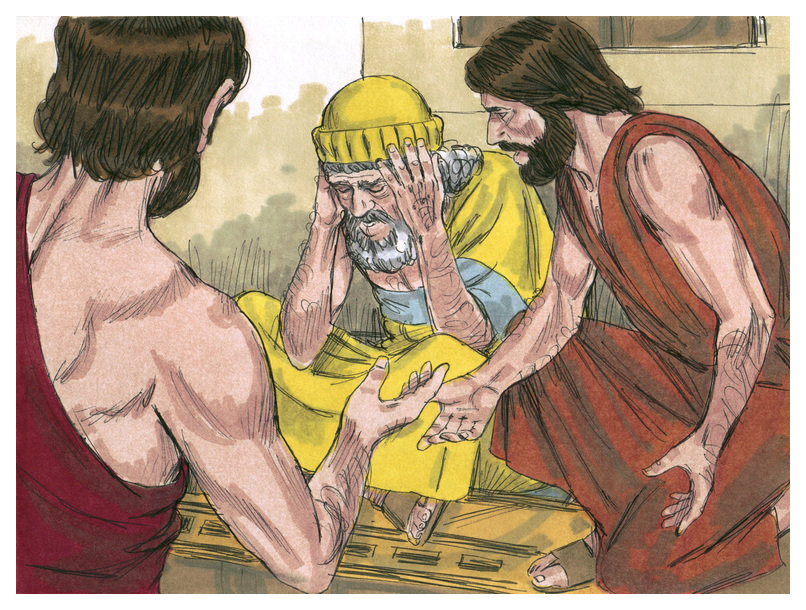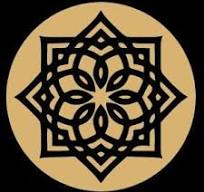ויתן אל משה ככלותו לדבר אתו – He gave Moshe [the Tablets] when He concluded speaking with him. These words describe the transmission of knowledge from master to disciple, and it is only natural that they sparked a lively discussion in the Midrash. Here is one paragraph of the Midrash Rabbah (Shemot 41:5) with a brief commentary:
ויתן אל משה, רבנין אמרי אלו עשו ישראל אותו מעשה עד שלא ניתנו הלוחות למשה לא היו יורדין בידו
ר’ לוי אמר משעשו אותו מעשה נתן הקדוש ברוך הוא למשה את הלוחות כמו שכתוב ויתן אל משה ככלותו לדבר אתו
He gave Moshe – the rabbis say, if the Israelites would have performed that act before the Tablets were given to Moshe, they [the Tablets] would not come down with him.
R. Levi says, after they performed that act God gave the Tablets to Moshe, as it is written – ויתן אל משה ככלותו לדבר אתו
The dispute between the rabbis and R. Levi is whether the laws of the Torah are observed for the sake of the Torah or the sake of the people. The rabbis argue that the goal is total observance of the Torah, and if that goal can be achieved only by one person, Moshe, he alone should receive the Torah and the Israelites should be rejected. R. Levi, on the other hand, argues that the Torah has value only as a tool to transform human society. It was given to the sinners, to those who were imperfect, so they can use its teachings and wisdom to change and improve themselves.
A similar debate takes place today among Jewish religious leaders. There are those who believe that the all the decrees, customs, and regulations added over millennia by scholars have become an integral part of the Torah, and that the ideal is to observe the Torah in its totality, even if it will be observed only by a small portion of the Jewish people, and there are those who believe that the Torah must be given to everyone, and that the rabbis must find ways to make it accessible and meaningful even to those dancing around the Golden Calf.
We continue reading:
אמר ר’ שמעון בן לקיש מהו לדבר אתו, משל לתלמיד שלמדו רבו תורה
עד שלא למדו היה הרב אומר והוא עונה אחריו
משלמד אותו אומר לו רבו בא ונאמר אני ואתה
כך כשעלה משה לשמים התחיל לומר אחר בוראו התורה
כשלמדה אמר בא ונאמרה אני ואתה – הוי לדבר אתו
R. Shimon ben Lakish said, “speaking with him” is analogous to a disciple learning from a master. Initially, the master speaks and the disciple repeats his words, but once the disciple understood, the master tells him to speak with him. Similarly, when Moshe went to heaven, he started by repeating after God, but once he understood, God told him “let us say together, me and you.”
In this beautiful and touching piece, R. Shimon ben Lakish channels his own history and the way he felt empowered by studying Torah. R. Shimon found the world of Torah in a relatively late age and became the disciple and later colleague of R. Yohanan. He describes his own journey from a recipient who is an inferior position, repeating the words of his master, to one who masters the knowledge and is now an equal partner of his original master.
According to the Talmud, the relationships between R. Shimon and R. Yohanan were very intense, and their learning together was passionate. Additionally, R. Shimon was allegedly enticed to study with R. Yohanan when the latter offered to introduce R. Shimon to his sister, whom he eventually married. These intimate relationships of scholarship, friendship, and marriage are highlighted in R. Shimon’s next comment:
מהו ככלותו? אמר ר”ש בן לקיש, כל מי שהוא מוציא דברי תורה
ואינן ערבין על שומעיהן ככלה שהיא עריבה לבעלה נוח לו שלא אמרן
למה? שבשעה שנתן הקדוש ברוך הוא התורה לישראל
היתה חביבה עליהם ככלה שהיא חביבה על בן זוגה
מנין? שנאמר ויתן אל משה ככלותו
R. Shimon ben Lakish said, if one teaches Torah, and his listeners do not feel the pleasure a newly wed couple feels, he should rather keep quiet. How do we know this? When God gave the Torah to the Israelites, they felt that it was their bride, as it says ככלותו – He concluded.
R. Shimon uses a clever wordplay on the word ככלותו which resembles the word כלה – bride, to convey his belief that the study and observance of Torah cannot be a purely intellectual activity or performance of religious ritual. Rather, it should be part of our life’s fabric and cause us excitement and pleasure (see my article Spiritual Intimacy – link below.)
R. Shimon continues to develop the bride analogy:
א”ר לוי א”ר שמעון בן לקיש, מה כלה זו מקושטת בכ”ד מיני תכשיטין
כך תלמיד חכם צריך להיות זריז בכ”ד ספרים
R. Levi said in the name of R. Shimon ben Lakish, just as a bride is adorned with twenty-four adornments, a scholar must be expeditious with the twenty-four books.
Twenty-four is the number of books in the Bible, and R. Shimon says a scholar should know them well so he could immediately retrieve knowledge – זריז. That kind of acquaintance with the Bible is no longer a requirement in the Yeshiva world, unfortunately, and it is probably one of the causes for the lackluster with which some people observe Torah. How can one be excited about Torah without being familiar, intimately, with the full scope of the Bible?
R. Shimon concludes with a harsh and very relevant criticism:
ככלותו, אמר רשב”ל מה כלה זו כל ימים שהיא בבית אביה מצנעת עצמה ואין אדם מכירה
וכשבאת ליכנס לחופתה היא מגלה פניה
כלומר כל מי שהוא יודע לי עדות יבא ויעיד עלי
כך תלמיד חכם צריך להיות צנוע ככלה הזו
ומפורסם במעשים טובים ככלה הזו שהיא מפרסמת עצמה – הוי ויתן אל משה ככלותו
ככלותו – R. Shimon ben Lakish says, a bride, as long as she is in her father’s house, hides herself and is not known to people.
Before she enters the Huppah she uncovers her face, as if saying “if anyone wants to testify about me [being promiscuous] let him step forward.”
Similarly, a scholar should be humble like the bride and well-known for good deeds.
R. Shimon is speaking about honesty and transparency. About not hiding behind a religious mantle. It is very appropriate this week as the Vatican is discussing the sexual-harassment atrocities performed by its clergy and ignored by its establishment for decades. Jews following the coverage cannot be complacent, thinking “this would have never happened to us,” because it happened. Not at the scale and magnitude of the church, but even one case of sexual-harassment is too much.
R. Shimon says that one’s fame does not stem from of his knowledge or even seemingly pious behavior, but from the way he treats other people. מעשים טובים in rabbinic language always refer to the relationships with other people, while מצוות describes our commitment towards God. Hence, the term תורה, מצוות ומעשים טובים covers the full spectrum of Jewish observance – learning Torah, observing laws between us and God, and observing the laws which govern our behavior towards others. R. Shimon further says that the scholar should be able to invite criticism, like the bride on the brink of marriage.
And this is also a warning to any community, whether a school, a Hassidic court, a synagogue, or a non-profit religious organization – don’t be afraid to ask questions and to demand explanations, and never, never covering up a leader’s troublesome behavior.








